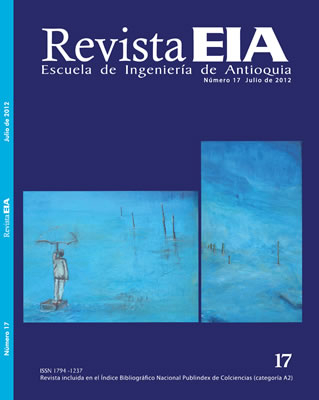IDENTIFICACIÓN EFICIENTE DE ERRORES EN ESTIMACIÓN DE ESTADO USANDO UN ALGORITMO GENÉTICO ESPECIALIZADO (EFFICIENT IDENTIFICATION OF ERRORS IN STATE ESTIMATION THROUGH A SPECIALIZED GENETIC ALGORITHM)
IDENTIFICACIÓN EFICIENTE DE ERRORES EN ESTIMACIÓN DE ESTADO USANDO UN ALGORITMO GENÉTICO ESPECIALIZADO (EFFICIENT IDENTIFICATION OF ERRORS IN STATE ESTIMATION THROUGH A SPECIALIZED GENETIC ALGORITHM)


This work is licensed under a Creative Commons Attribution-NonCommercial-NoDerivatives 4.0 International License.
Copyright statement
The authors exclusively assign to the Universidad EIA, with the power to assign to third parties, all the exploitation rights that derive from the works that are accepted for publication in the Revista EIA, as well as in any product derived from it and, in in particular, those of reproduction, distribution, public communication (including interactive making available) and transformation (including adaptation, modification and, where appropriate, translation), for all types of exploitation (by way of example and not limitation : in paper, electronic, online, computer or audiovisual format, as well as in any other format, even for promotional or advertising purposes and / or for the production of derivative products), for a worldwide territorial scope and for the entire duration of the rights provided for in the current published text of the Intellectual Property Law. This assignment will be made by the authors without the right to any type of remuneration or compensation.
Consequently, the author may not publish or disseminate the works that are selected for publication in the Revista EIA, neither totally nor partially, nor authorize their publication to third parties, without the prior express authorization, requested and granted in writing, from the Univeridad EIA.
Show authors biography
En este artículo se presenta un método para resolver el problema de estimación de estado en sistemas eléctricos usando optimización combinatoria. Su objetivo es el estudio de mediciones con errores de difícil detección, que afectan el desempeño y calidad de los resultados cuando se emplea un estimador de estado clásico. Dada su complejidad matemática, se deducen indicadores de sensibilidad de la teoría de puntos de apalancamiento que se usan en el algoritmo de optimización de Chu-Beasley, con el fin de disminuir el esfuerzo computacional y mejorar la calidad de los resultados. El método propuesto se valida en un sistema IEEE de 30 nodos
Abstract: In this paper a method to solve the state estimation problem in electric systems applying combinatorial optimization is presented. Its objective is the study of measures with difficult detection errors, which affect the performance and quality of the results when a classic state estimator is used. Due to the mathematical complexity, sensibility indicators are deduced from the theory of leverage points used in the Chu-Beasley optimization algorithm with the purpose of reducing the computational effort and enhance the quality of the results. The proposed method is validated in a 30-node IEEE system.
Article visits 245 | PDF visits 153
